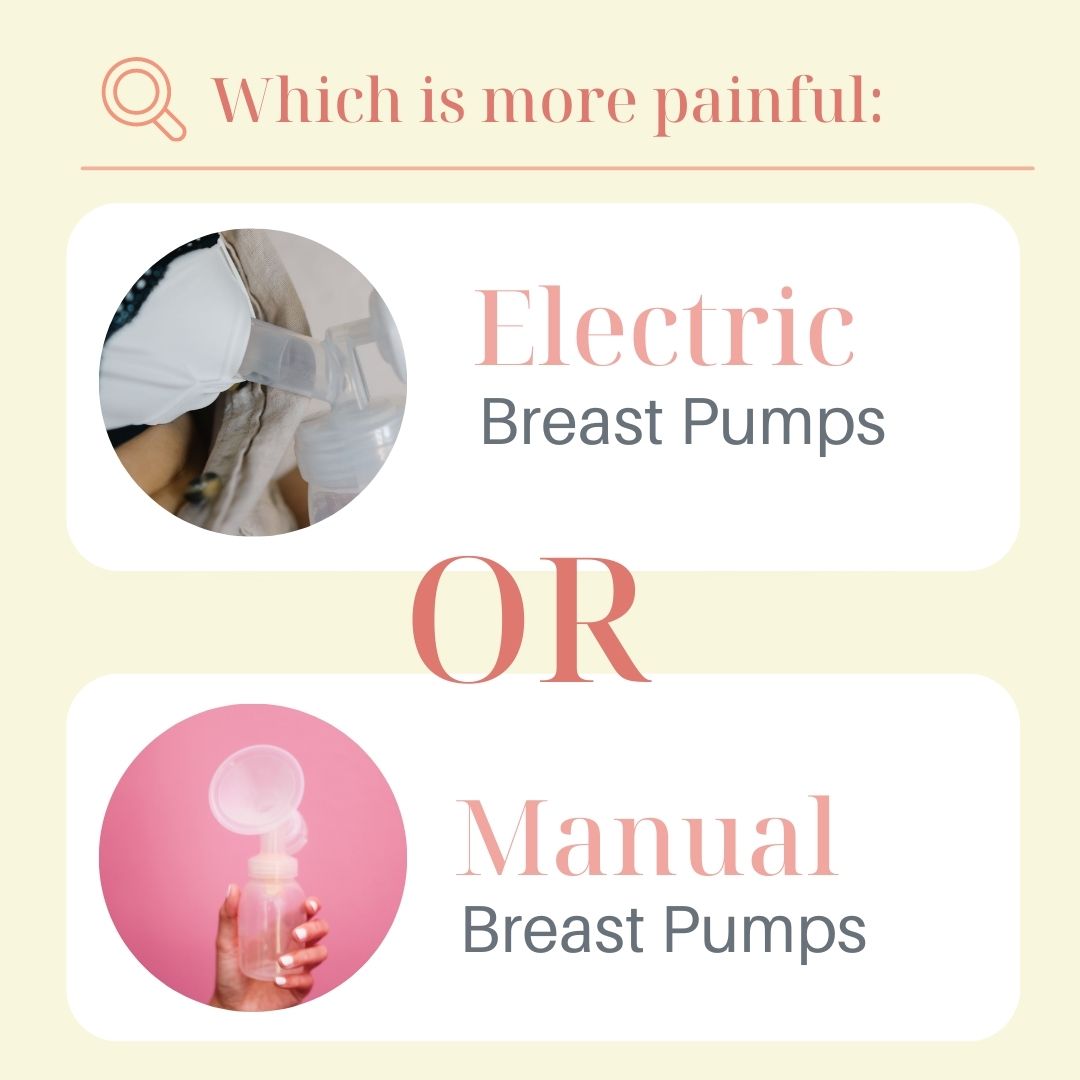Are Electric Breast Pumps More Painful than Manual Breast Pumps?
Mommy Care Team
If you are new to the world of breast pumps, you might find yourself doing a fair amount of research. Which pump should I get? Are certain pumps better than others? Will my insurance cover the cost of my breast pump? How Do I use a pump? At some point during this research, you are bound to stumble across articles and posts about breast pumps and pain. This then sets off a whole new list of search queries. For example: Are electric breast pumps more painful than manual breast pumps?
Breast Pumps and Pain
Before we start diving into various pump categories and comparing them, let’s talk about pain caused by pumps in general. Just because you pump doesn’t mean you will experience pain. In fact, there are plenty of moms who pump, even exclusively pump, and never have an issue with pain. So why all of the talk about breast pumps and pain? Just like with exercise, pain is an indicator that something is wrong. When you try something new, there is a learning curve and while you are navigating that curve, you might have to troubleshoot an issue or two.
This is actually good news though. Because if something is wrong, there is a chance to fix it. That means, if you do experience pain while pumping, we can find the cause, and work through it.

Electric Breast Pumps Versus Manual Breast Pumps
There are a few similarities and a few differences between these types of pumps. We have a great post that helps you pick between the two of these when buying your pump, and another on what makes manual pumps so great to have on hand.
Similarities
Both use flanges, valves, and collection bottles. The point where pain enters the equation is usually the breast pump flanges. These are the cone shaped plastic pieces that fit snugly against your breast tissue. The fit needs to be snug in order to create and maintain suction which is what helps to draw out your breast milk. Sizing can be a bit murky though. Most pumps only come with one to two flange sizes so many moms innocently assume they are either one or the other. That’s what this author did!
Differences
The major difference between electric breast pumps and manual breast pumps comes down to the suction. Mainly, we’re talking about the strength and duration of that suction. Electric pumps have a motor and manuals have a lever, both create the suction needed to express your breast milk. The motor of electric breast pumps offer an array of settings which allows you to adjust the strength of this suction. The higher settings tend to be stronger than what you can achieve with a manual pump.
The duration of the suction is the other difference. With a manual breast pump you tend to have a bit more control over the duration of the suction. Being hand held, you also tend to have a little bit more control over the alignment of your nipple in the flange and can adjust this as you pump.

So What Are the Causes of Pain and Which Pump Is More Painful?
Flange Fit
Using a flange that is too small can create friction, and using a flange that is too big allows too much of your breast tissue to be pulled into the flange. Both situations are painful and can cause too much pressure on your milk ducts, restricting your milk flow. Both electric and manual pumps can be painful if you are using the wrong sized breast pump flange. Check out this post for more information on flange sizing and a free downloadable ruler.
Suction
One potential downfall of electric pumps is that they are quite strong. Moms who are not used to using them, may be tempted to turn up the level of suction. There is a common misconception that more suction equals more milk expressed. Our bodies are not built that way though, and using suction that is too strong for your body can lead to pain.

Length of Pump Session
Allowing your pump sessions to go too long can really take a toll on your sensitive breast and nipple tissue. Manual pumps take more work and so your sessions don’t tend to run the risk of going too long. Electric pumps however, can go for well, as long as they’re plugged in. It’s helpful to seek the guidance of a lactation professional to learn how long and how often you should pump depending on your body and your baby’s needs.
Dry Pumping
Pumps are great tools to help build or increase your breast milk supply. Even if no milk is expressed, the suction mimics your baby suckling and can stimulate your body to produce more breast milk. This is known as dry pumping. Too much of anything good can be bad though. Too much dry pumping can cause pain regardless of what type of pump you are using.

Elastic Nipples
If you aren’t familiar with elastic nipples, check out this post! The hormone relaxin can make nipple tissue too elastic for some moms. In this case, your skin actually hits up against the back of the flange tunnel with every suction. Electric pumps can become painful over time for moms with elastic nipples. Manual pumps, where the user is in control of the suction may be less painful.
Misalignment
Your nipple tissue should be centered in the tunnel of the flange. Properly aligning your nipple cuts down on friction or rubbing against the hard plastic which can cause pain. Alignment is important for either type of pump, but misalignment with an electric pump, due to the strength and repetition of the suction, can be very painful. In fact, we have made our breast pump cushions clear so that you can maintain proper alignment with the cushion and pump while using them.
Breast Health
Milk blebs and clogged ducts, thrush and mastitis, are conditions that can affect all breastfeeding moms. In these cases, pumping with either an electric or manual breast pump might be painful. However, a manual breast pump can help to clear blockages and alleviate pain caused by them.
